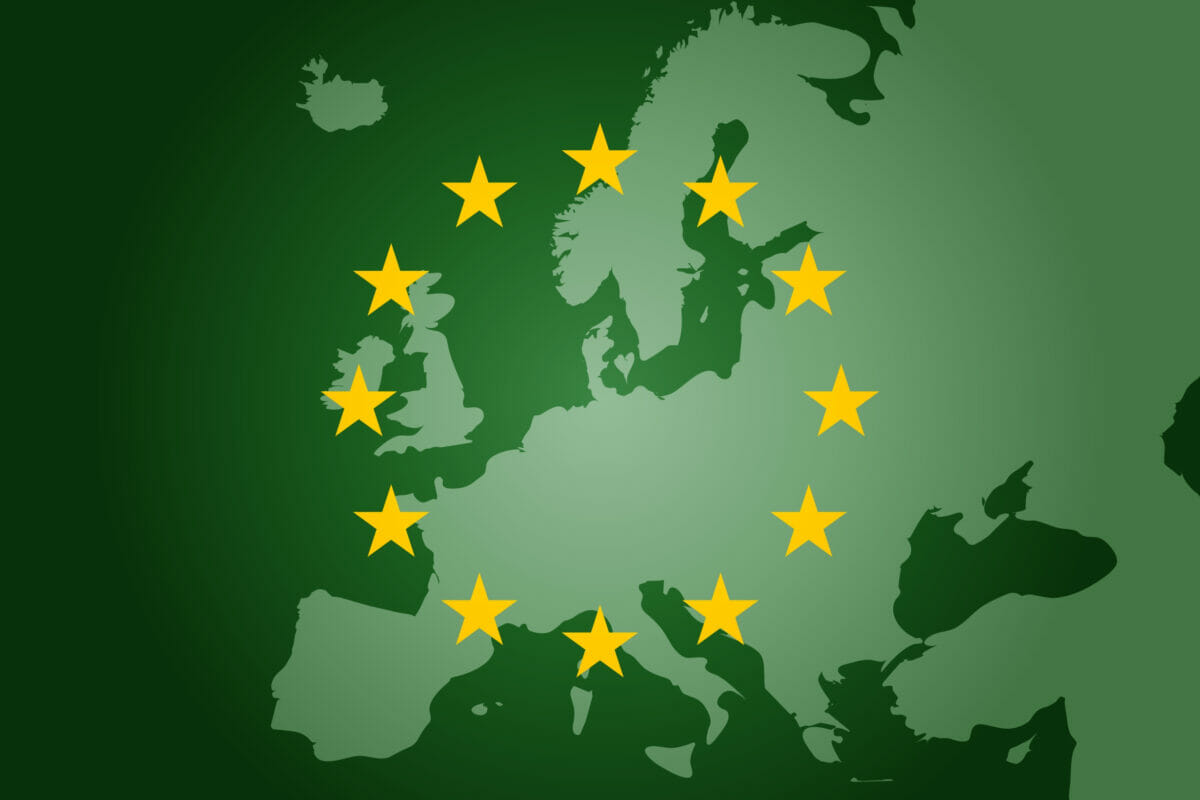The EU’s Farm to Fork Strategy aims to make food systems fair and healthy while reducing pesticide use—and USDA chief Tom Vilsack vehemently opposes it.

In early 2020, the European Union announced, as part of its European Green Deal proposal, an agricultural component known as Farm to Fork. Under this proposal, EU members would reduce their pesticide use, reduce food waste, improve animal welfare and increase the amount of land used for organic or sustainable practices. The EU also wants to ban food imports of crops grown using agrichemicals that contribute to global environmental problems.
Over the last month, the USDA has attacked the EU plan through press appearances, releases and statements, as Eddy Wax and Emma Anderson write in an article for Politico. They say that this is a “brewing Cold War between the two agricultural heavyweights over the future of farming.” So, what’s the deal? Why is the USDA so against these policies?
Under the Trump administration, officials repeatedly hammered the EU, saying that the EU’s plan is “anti-technology,” by which the administration meant that the EU’s plan would have fewer uses for advanced pesticides and pesticide applications, drugs for livestock and up-and-coming software applications such as artificial intelligence. Perhaps more tellingly, the Trump administration noted that these restrictions would likely have trade ramifications for transatlantic business. The Biden administration, although it has broken with its predecessor in many ways, has maintained this general stance.
The USDA’s targeted attack on the Farm to Fork program has taken the form of statements from USDA officials, including USDA chief Tom Vilsack, as well as pointed studies from the Economic Research Service (ERS). In one of those studies, the ERS finds that the proposals from the EU would reduce the EU’s agricultural production by 12 percent and increase food prices by 17 percent within member countries.
This, though, is a continuation of a narrative that the USDA has been pushing for a century: More production is better. In reality, the United States has an agricultural overproduction problem, especially in key sectors such as corn, soy, wheat and dairy. An obsession with production and yield has led to these sectors producing far more than the market needs, which in turn has led to large subsidies, mass governmental purchases and attempts to shoehorn excess production into products such as biofuel. The problem, as has been noted over and over again, is not that the world doesn’t produce enough food: It’s that people don’t have enough money to buy the food.
And, of course, there are the other problems. The obsession with yield and profit and growth has led to fewer jobs, corporate monopolies, land-squatting and environmental disasters fed by excessive use of pesticides and fertilizers.
The USDA’s main beef with the EU’s plan is all about money. It is not clear what sort of trade barriers may arise from it, but signs indicate that there may be restrictions on trade and imports with countries that do not have as stringent regulations as the EU. That means fewer EU imports of American cereals and meat. The EU is the fifth-largest export partner for American agricultural goods, worth more than $11 billion per year. It is not the only one at risk, either; Mexico has enacted rules that could result in a ban on genetically modified American corn, and Mexico is an even bigger trade partner than the EU. The USDA fears that the requirements introduced by the Farm to Fork agreement could become a widespread movement, dramatically reducing markets for American goods.
Vilsack’s USDA is not quite as openly pro-agribusiness as former agriculture secretary Sonny Perdue’s, and so this opposition to the Farm to Fork proposal is accompanied by a statement about how the United States will deal with the problems of food insecurity, the environment and climate change. Vilsack told Politico that “there are two different pathways” and that the United States does not believe it necessary to reduce yield in order to create more sustainability. The US’s plan would involve more high-tech approaches such as targeted spraying and artificial intelligence—just like the Trump administration mentioned—to reduce pesticide use without fundamentally changing anything about the American agricultural system.
One problem of what the EU does is that it is very strict on banning residues of herbicides/pesticides (or on occasion it won’t even allow its use, regardless of whether it can detect any residues) European farmers don’t or cannot use but it will provide exemptions / long phaseouts / less strict regulation for herbicides/pesticides that its farmers need.
Lining up with the safer and healthier practices being implemented in Europe is another path the USA can take. Why we are so opposed is a bit perplexing.